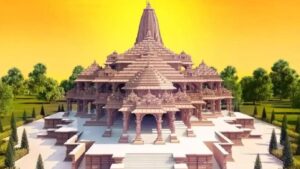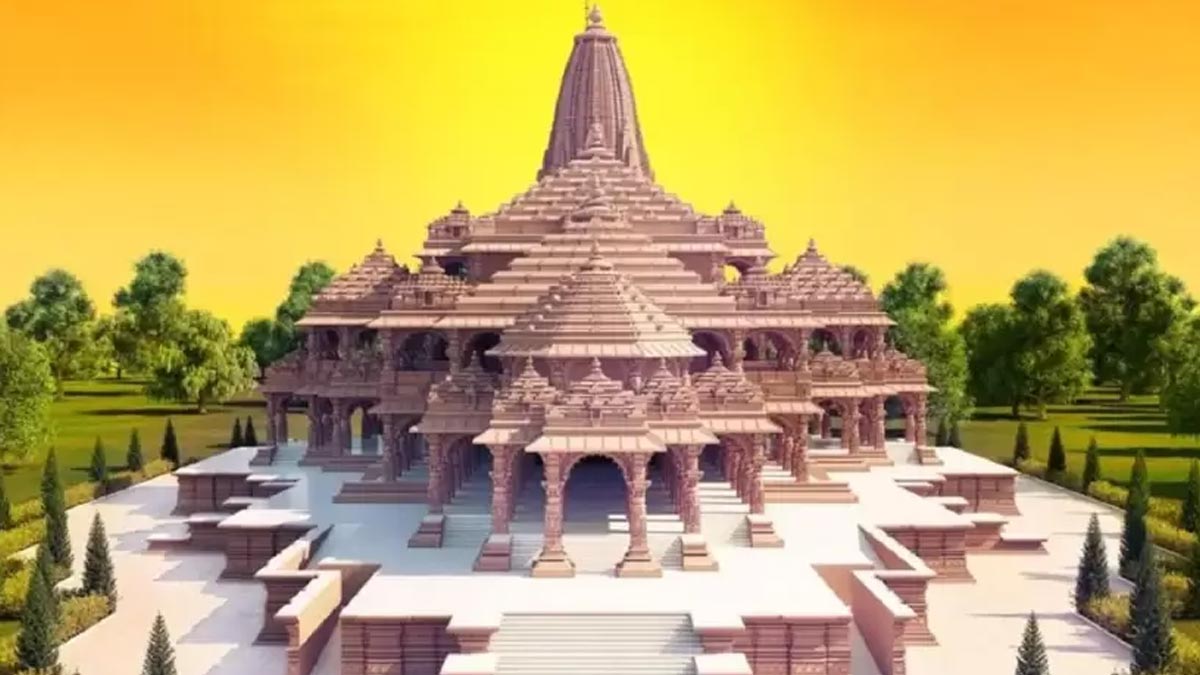Introduction:
The Ayodhya Ram Mandir project stands as a monumental testament to the enduring tapestry of India’s cultural and religious landscape. Rooted in the ancient city of Ayodhya, the construction of the Ram Mandir is more than just a physical edifice; it represents the fulfillment of a fervent collective aspiration. This blog explores the historical significance of Ayodhya and provides a concise overview of the Ram Mandir project, encapsulating the rich cultural and spiritual heritage that has woven its narrative into the fabric of time.

Historical Significance of Ayodhya:
Nestling on the banks of the sacred Sarayu River, Ayodhya represents a city steeped in mythological lore and historical eminence. Mythology asserts that Lord Rama, the revered hero of the ancient Indian epic, Ramayana, was born here. The city, acting as a crucible of cultural confluence, has experienced the ebb and flow of empires, with each empire leaving an imprint on Ayodhya’s storied landscape.
The city’s importance goes beyond its tangible structures; it serves as a repository of spiritual energy, attracting millions of devotees seeking solace and divine connection to its pilgrimage sites. In this hallowed city, the Ram Mandir project takes root, driven by the deep-seated reverence for Lord Rama and the aspiration to materialize a grand temple at his birthplace—a dream nurtured by generations.
Ayodhya in Hindu Mythology:
Nestling on the banks of the Sarayu River, Ayodhya, the ancient city, plays a profound role in Hindu mythology. Ancient texts attribute the city’s foundation to King Manu, and it subsequently served as the capital of the illustrious Ikshvaku dynasty. The city immortalizes itself as the birthplace of Lord Rama, the seventh avatar of Lord Vishnu. Descriptions often portray Ayodhya as a divine abode radiating spiritual energy, and it aligns itself with ideals of justice, righteousness, and virtuous rule.
Ramayana and the Birth of Lord Rama:
The Babri Masjid Controversy:
In the 20th century, the Babri Masjid-Ram Janmabhoomi dispute took center stage, revolving around a mosque constructed in Ayodhya in the 16th century by Mughal Emperor Babur. Hindus assert that the mosque was built on the birthplace of Lord Rama, where a temple once stood. The controversy gained momentum in the 1980s as demands for the construction of a Ram temple intensified.
Tensions reached a boiling point, resulting in a group of activists demolishing the Babri Masjid on December 6, 1992. This event sparked widespread communal strife and initiated legal battles. In 2019, the Supreme Court of India ruled in favor of constructing a Ram temple at the disputed site while allocating an alternative plot for a mosque. The resolution marked a significant chapter in the history of Ayodhya, seeking to reconcile historical and religious sentiments.
Conclusion:
Ram Mandir stands as more than a physical structure; it represents the culmination of a profound historical and cultural journey intricately interwoven into the fabric of Ayodhya. Rooted in Hindu mythology, the construction of the temple goes beyond addressing a long-standing religious sentiment; it serves as a powerful symbol of the collective striving for unity and harmony.
Transitioning from the rich historical and cultural context, the resolution of the Babri Masjid-Ram Janmabhoomi dispute and the subsequent construction of the temple mark a significant chapter in India’s complex narrative. This transformative process actively endeavors to bridge historical and religious divides that have lingered for decades. As the Ram Mandir emerges on the landscape, it is not merely a structure but a dynamic entity poised to evolve into a spiritual center.
Looking ahead, the temple is expected to transcend its religious significance and become a beacon, drawing in tourists and pilgrims from across the globe. In doing so, it is set to foster cultural understanding by inviting individuals to witness and engage with the shared history and beliefs. Beyond its spiritual and cultural dimensions, the Ram Mandir is anticipated to play a pivotal role in the socio-economic development of Ayodhya. The influx of visitors is likely to stimulate local economies, providing opportunities for growth and prosperity.
In essence, the Ram Mandir encapsulates a multifaceted narrative — a tale of historical roots, cultural resurgence, religious harmony, and economic potential. As it takes its place in Ayodhya’s landscape, the temple holds the promise of not only serving as a place of worship but also as a catalyst for positive transformation, bringing people together and contributing to the holistic development of the region.
please follow devosionverse.com for more

